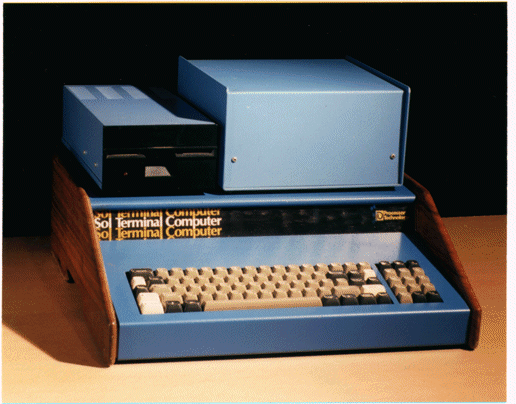

The first microcomputer in our Department was a Processor Technology SOL-20, purchased by Joe Felsenstein (out of his own pocket for about $2000) in November of 1977. It had 16K of RAM, no disks, and took its input from a cassette tape recorder. It had BASIC available and was mostly used for BASIC programming.
The SOL was produced by Processor Technology from 1976 to 1978, when the company went out of business. It was the best-selling microcomputer of 1977. It was designed by Joe's brother Lee, who worked for Processor Tech in Berkeley (I mean, if your brother designed a microcomputer, you couldn't very well buy anything else, could you?). It used an Intel 8080 processor running at about 1 MHz. The machine was purchased at the Retail Computer Store in the Greenlake area of Seattle, the first computer store in town. The hardware expert there, the guy who put the machine together from a kit, was Tim Patterson. He later wrote an operating system, QDDOS, that became first SCPDOS and then MSDOS version 1.0.
In 1979 the machine was expanded with grant money to have two 8-inch floppy disk drives and 56K of memory. It could then run the CP/M operating system. The disks had 243K of capacity on each. The SOL served the lab well as a development machine for the PHYLIP package and to check equations for Bruce Walsh's thesis.
The photo above does not show our SOL, which had a monitor adapted from a small black-and-white TV, and much larger disk drives.
On its 20th anniversary, in 1997, the machine was powered up. The disk drives, processor and video board seemed to work but the keyboard stopped responding after a bit.